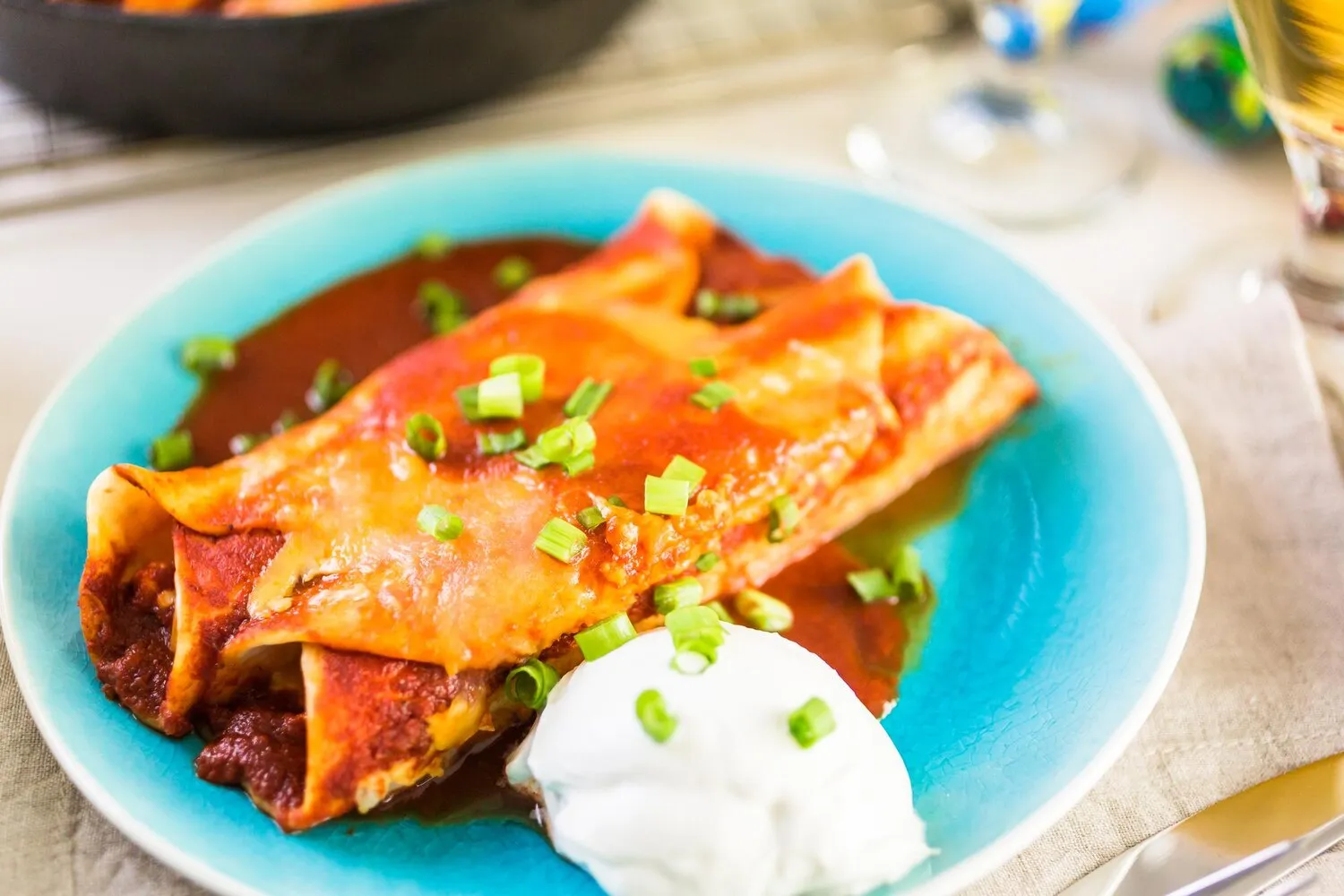
Enchiladas
Corn tortillas rolled around a filling and covered with a chili pepper sauce.
Nutrition Facts
* The % Daily Value (DV) tells you how much a nutrient in a serving of food contributes to a daily diet. 2,000 calories a day is used for general nutrition advice.
Mi Azteca Mexican Restaurant
The origins of enchiladas can be traced back to ancient Mayan civilization, where corn tortillas were used to wrap small fish. As the dish evolved through centuries of culinary innovation in Mexico, ingredients from various regions and cultures were incorporated. The use of chili peppers, a staple in Mexican cuisine, gradually became an essential component of the sauce. The dish further diversified with the introduction of new ingredients from Europe following the Spanish conquest.
Enchiladas are deeply embedded in Mexican culture and are frequently served during family gatherings, celebrations, and festive occasions. They reflect the culinary heritage and regional diversity of Mexico.
Regional Variations
Enchiladas vary significantly by region in Mexico. For example, Enchiladas Verdes (green enchiladas) are common in central Mexico, using a tomatillo-based sauce, while Enchiladas Rojas (red enchiladas) are popular in other areas, using a chili-based sauce. Enchiladas Suizas (Swiss enchiladas) are covered in a creamy sauce, often with Swiss cheese or cream.
Family Traditions
Many Mexican families have their own unique recipes and variations of enchiladas passed down through generations. Making enchiladas together is a common family activity, especially for special occasions.
Fiestas and Celebrations
Enchiladas are a staple at Mexican fiestas, celebrations, and holidays such as Cinco de Mayo and Día de Muertos. They are considered comfort food and a symbol of Mexican hospitality.
Enchiladas offer a complex and satisfying flavor profile, characterized by the interplay of savory fillings, tangy and spicy sauces, and the subtle sweetness of corn tortillas.
The flavor primarily depends on the filling, which can range from cheese and beans to shredded chicken, beef, or seafood. The chili sauce, a fundamental element, can be mild or intensely spicy, delivering a depth of earthy, smoky, and fruity notes. The cheese topping adds richness and creaminess. Common flavors include savory, spicy, cheesy, and slightly smoky, with variations depending on the ingredients and regional preferences.
Tortilla Preparation
Lightly frying the tortillas before filling them helps prevent them from breaking when rolled and gives them a more pliable texture. This step is crucial for a well-constructed enchilada.
Sauce Consistency
Achieve the perfect sauce consistency by simmering it for an adequate amount of time, allowing the flavors to meld. The sauce should be thick enough to coat the tortillas without making them soggy.
Filling Flavor
Season the filling generously to ensure it is flavorful enough to complement the sauce and tortillas. Taste and adjust the seasonings as needed before assembling the enchiladas.
Cheese Selection
Use a good quality melting cheese such as Monterey Jack, cheddar, or queso Oaxaca for the topping to get a nice, gooey texture when baked. Shredding the cheese yourself, rather than buying pre-shredded cheese, often leads to better melting.
Explore additional Mexican dishes and restaurants
Explore MexicanDiscover top dining spots and culinary experiences in Chantilly.
Explore ChantillyLearn more about the food culture, restaurant scene, and culinary heritage of United States.
Explore United States